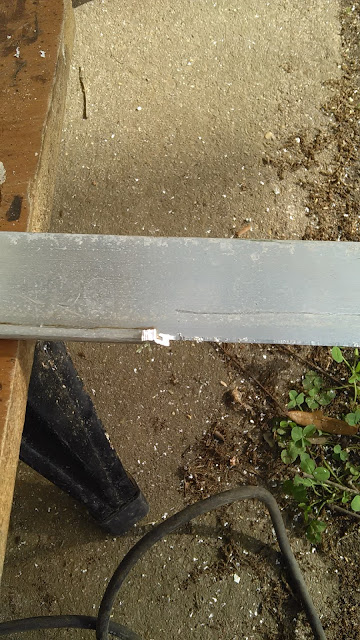I am just going to post the data and let the reader decide but a little intro. The JFET can be used as a constant current source. If you connect the gate and source and apply a voltage it will self regulate at some current. When you look at the datasheet this value is given as Idss. The JFETs I'll be using ar 2Sk2539s. Arrow.com has them on sale for $0.005 each which is $15 for a reel of 3000. With free shipping that was hard to pass up. So I will be using the 2Sk2539s for all my circuits for some time to come. They are high frequency amps so it will be possible to build a set with them exclusively. Now I'm passed the intro, here is the Idss from the datasheet.

Observe Idss 10.0* 50.0*. See the note. They come in AK(6,7,8) 3 different ranges of Idss. The 10 - 50 being broken into three pieces. Mine are AK7 which is 16 - 32 ma. It is good to know I can pass that much current without damaging my JFETs but I like to not drain my batteries any more than necessary. My goal will be less than 1 ma for each stage. The JFET can be looked at as a voltage controlled current source. It has a self regulated current when the gate is tied to the source and when the gate is biased with a set voltage it will regulate at a different current. So the problem is to determine at what voltage to set the gate. Fortunately the device will find a point of operation on its own if we just provide the bias and we can provide a negative feedback by simply placing a resistor in the source circuit with the gate tied to the other end. The Vgs(off) or pinch off voltage is also on the sheet above. -0.6 to -3.0 volts with -1.4 volt typical. So I GUESS I can place a 2.2k resistor in the source circuit and get a drain current well below 1 ma. Now to the sim.

So I 'throw' together a circuit with 2.2k resistor in the source and drain. My earbud will be 64 ohm and I placed one in the source and drain to see where it might be best placed. Some like to put them in the DC path I think any DC in the earbud is not good. They are to easy to over drive. Anyway you can see the one fed through the capacitor rides a zero bias and the other is riding a 350ua bias. Other than that they are much the same.
Here I placed a capacitor in both circuits and they are identical except for being out of phase.
If you have a 2k headphone you can use this circuit. Here again make no difference if it is fed from the source or drain. Why is this? We have the same current flowing through the resistor s and they are the same value. What would happen if we raise the drain resistor value?
How about the other drain resistors???
It will drive an earbud and headphone. Will need a volume control.
The as built circuit for my earbud. 1uv input 800uv output. I did put a 100 ufd capacitor across the supply terminals. This helped stabilize the supply to prevent feedback on the supply line.
You may have noticed I used 2SK117s in the sim. I don't have a SPICE model for the 2SK2539. My next project will be to build a model that more closely matches my circuit.
To be continued..............



















































